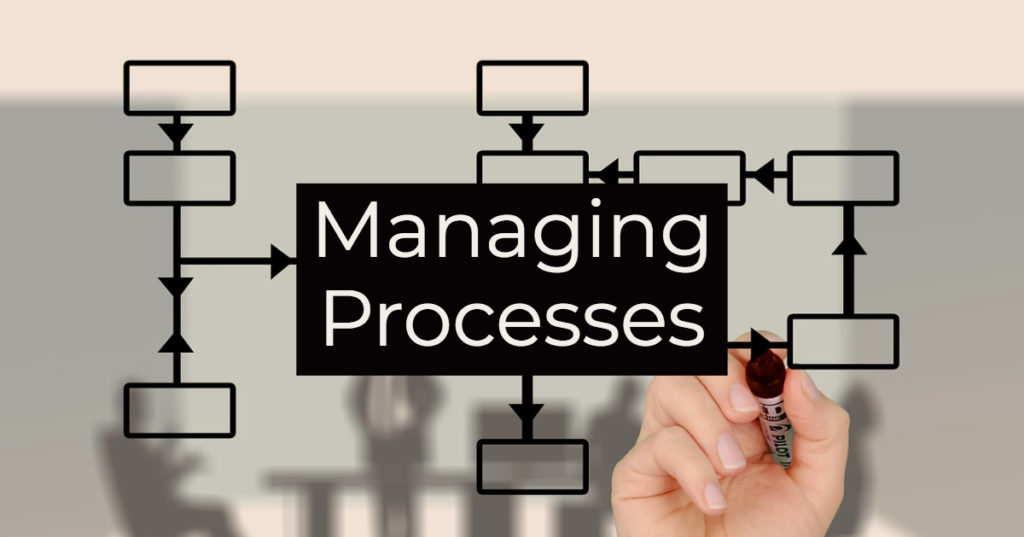
We spend a lot of time talking about writing processes and documenting procedure. But we haven’t talked much about managing processes.
When you first write an operational or project management process, a lot of thought goes into every detail. It is a tedious and challenging exercise. You have to think through every single little thing that you do to execute tasks. And, then you have to think about all the issues that might arise and include how to prevent them as part of your steps. Plus, you have to try to throw out the “one-off” scenarios that might add unnecessary complications to what should be a straightforward, step-by-step procedure to execute specific tasks.
Another challenge during documentation is to decide what goes in as a process document and what goes in as a procedure. When we set up templates for our clients, we have both process documents (prose that explains how and why you do things) and procedures (step-by-step tasks that are part of the templates themselves). We think through when the process ends and the procedure takes over as part of that setup.
Managing Processes
After you’ve worked through all that, you still have the challenge of managing processes for the future. Processes and procedures are intended to evolve as your company grows. But, after you’ve put in all the work to document everything, how are you managing processes for the future? What do you do if things change? How much evolving is happening without you re-documenting?
Standard, Regular Review
First, you should definitely have a review process as part of your operational tasks… something that reminds you every 6 months (or time period of your choosing) to read through your processes and clean them up. You need to decide:
- is this process still necessary?
- is this still how we do it?
- what are people changing that isn’t included?
- have any major issues arisen that we should include in the process so that we can prevent it in the future?
- is part of this process obsolete?
- have the players or the technology changed?
Changes
Second, as changes arise in your daily use of your tools, you should consider that as part of managing processes. For example, if you switch from Asana to Teamwork.com, it is going to affect how you open projects and potentially how you use a template. The tools work differently, so don’t expect your team just to “know.” This is especially true when you bring new team members on board.
Problem Prevention
Third, one of the beauties of managing processes is that you have a place to note any problem prevention that arises for your team. For example, if your client is continually frustrated by typos in your copy, your creative team can mark all non-proofread copy with a “draft” stamp so the client is more forgiving. Adding the step, without adding it to the process, defeats the purpose of the process. Something like that, added to both the process and the procedure, avoids future issues with that client, and likely others.
Storing Processes
Storing processes is as important as managing processes. You need to put them in a centrally located place, where only authorized people can edit them. Here are a few examples:
- as Text documents (Basecamp), Notebooks (Teamwork.com) or the equivalent in your project management software in the main company project, which will show an audit trail
- as Google Docs in Google Drive, with edit access only provided to the authorized individuals
- in SharePoint Online
- in Confluence (if you are using Jira)
Using Processes
No post on managing processes would be complete without brief instructions on how to use them.
Storing them in a centralized place allows access to your whole team. I recommend, for processes that are often repeated, you perform the steps one-by-0ne as you read along. If it is something you do every day, you will quickly get the hang of it. That familiarity prevents the need to refer back. If it is something you do only occasionally, then I recommend that you read along as you work every time. In a small company, on-boarding a new employee is an example of something you might do once a year at best.
One of the most important parts of using processes is making sure that new hires read them and know where they are. Thereafter, they should definitely read through them as they work.
A large part of managing processes is holding the team accountable to them. While you always want improvements brought to your attention, you should stand behind your process firmly. Those processes should become part of your brand – how you do business. And it gives you, as the small business owner, peace of mind that your employees are executing properly for your clients. That’s the only way to build repeatable successes.

Leave a Reply